Learning
How to Choose the Correct Extension Cords in Thailand

Extension cords are an essential requirement in modern homes and even workplaces. They allow you to use electrical devices conveniently without plugging those devices directly into the wall sockets. But despite their significance, most people don’t exercise due diligence while shopping for extension cords. They simply pick the next cord available, provided that the product looks like it can get the job done.
However, purchasing cheap and low-quality extension cords is a false economy in the long run. Depending on the nature of electrical appliances and gadgets you’re using the cord with, you may find yourself replacing your extension cords more often than you should. Worse yet, low-quality extension cords are a significant health hazard. That’s especially true for cords of the wrong sizes and specs. Electrical cord-related accidents kill scores of people and result in thousands of injuries every year.
One key consideration while shopping for extension cords is the size. And size denotes both the diameter/thickness/gauge and the length. In this post, we unveil a definitive guide into choosing the best extension cord sizes.
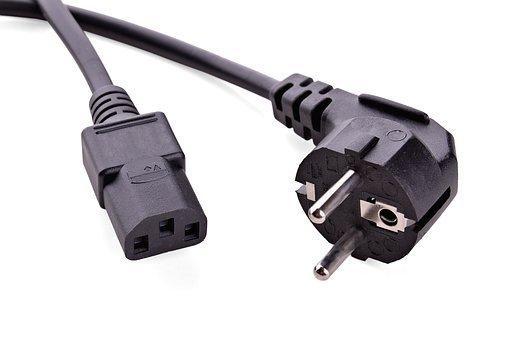
How Do Extension Cords Work?
Before we highlight the top factors to consider while shopping for an extension cord, it’s essential to begin by understanding how these devices work. Extension cords are made up of insulated wires, which transmit electrical current from the wall socket or other main outlet to an electrical appliance. The cords typically feature a plug on both ends.
Provided that you’re using a premium-quality extension cord and there are no significant electrical surges, then the cords should work just fine. However, a surge in the electric current could make the wires overheat and melt, causing malfunctions.
The extent of the resultant malfunctions depends primarily on the amount of excess electric current flowing through the wires. In most cases, the wires simply melt and cut the supply of electric current. But if you’re unlucky enough, the resulting current surge may trigger massive explosions and result in damages to both the extension cord and the electrical appliance on the other end.
Now, the size of your extension cord plays a crucial role in regulating the current flowing through it. Cords of the right length and gauge are highly effective at controlling the current flowing from the power source to the electrical appliance plugged into the cord.
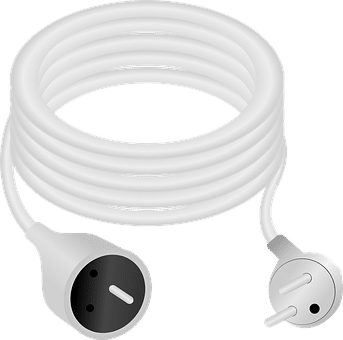
Choosing the Right Extension Cord Size
Consider the Length
As we’ve already pointed out, the size of an extension cord is determined by both the wire’s length and gauge. Longer extension cords come with a range of benefits. Most notably, these cords make it possible to use your electrical appliances and gadgets within a relatively long radius of the main power outlet. But longer cords have their drawbacks too.
First, they cause entanglements, thereby increasing the risks of accidents. Longer extension cords also cause a drop in overall voltage. That can be a significant concern if using these cords with heavy-duty appliances. So, what’s the standard length of an extension cord?
The ideal length of an extension cord depends primarily on the power consumption needs of your electrical appliances. Light-duty devices like smartphones and laptops can work fine with longer cables. But for heavy-duty electrical appliances like refrigerators, the cord shouldn’t exceed 100 feet. Otherwise, you may need to upsize it.
Location and convenience are other factors that may influence the choice of an extension cord’s length. For instance, longer cords will serve you better when working outdoors than shorter ones.
Consider the Gauge
An extension cord’s gauge refers to the diameter or thickness of the actual copper wires carrying the current, not the thickness of the plastic or rubber coating. The gauge determines the amount of current that can flow through the cord without heating it.
Standard extension cord wire gauges are 18, 16, 14, 12, and 10. The lower the number, the thicker the gauge. And the thicker the gauge of an extension cord, the more effective it is in carrying electricity.
Balance the Length, Gauge, and Amps
Although the length and gauge of an extension cord are two different things, they should be considered side by side when shopping for an extension cord.
It may be tempting to purchase shorter cords, arguing that such wires are more reliable with heavy-duty electrical appliances. However, you probably won’t enjoy that reliability if the length is shorter, but the gauge is smaller. If you’re new to extension cords, consider investing in 12-gauge, 14-gauge, or 16-gauge cords.
For 12-gauge cords, you can comfortably go for a cord of length 50 – 100 feet. That combination can effectively power a 10 – 15 amps appliance. 14-gauge cords are slightly weaker than their 12-gauge counterparts. So, it goes that the cord length should subsequently be reduced. 14-gauge cords are better used with a cord of length 0 – 50 feet to power an appliance with 10 – 15 amps.
Lastly, 16-gauge cords can be used with a cord of length 0 – 100 feet. But such a small gauge can only handle loads of up to 10 amps.
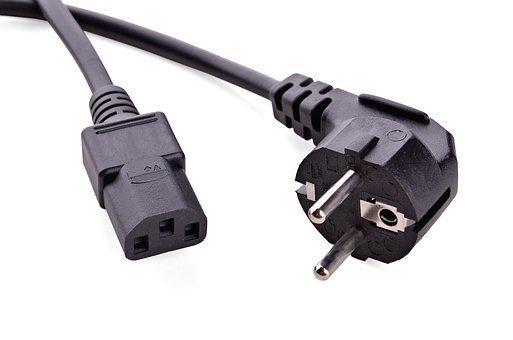
Light-duty Vs. Heavy-duty Electrical Appliances
The common perception out there is that smaller electrical devices are light-duty, whereas larger appliances are heavy-duty. While there’s some truth to these assumptions, smaller gadgets do not always run on lower electric currents.
Take a case of an iron box and a desktop. An iron box is probably more than half the size of an average desktop. But if you analyze the electric consumption of these gadgets, you’ll realize that a desktop utilizes far less electricity. Based on the standards for choosing an extension cord discussed above, a desktop may work just fine with longer cords of smaller gauges. On the other hand, an iron box would require shorter cables of higher gauges.
So, what’s the right way to tell light-duty electrical appliances from heavy-duty ones?
Functionality is the most reliable differentiator between light- and heavy-duty electrical appliances. Generally, heat-generating gadgets require more electric current. Hence they are best used with higher-gauge cords. Using such devices with lower-gauge cords may result in heavy electrical load, potentially causing short circuits and explosions.
Examples of light-duty appliances include lamps and clocks. Smartphones, laptops, desktops, and audio-visual systems are classified as medium-duty gadgets, whereas refrigerators, freezers, dishwashers, ovens, iron boxes, and washing machines constitute heavy-duty ovens.
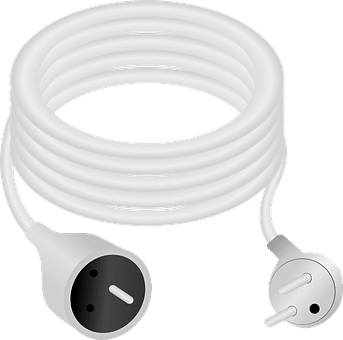
Final Word
There goes our definitive guide to choosing the correct cord sizes. As a parting shot, ensure the cord comes with built-in GFCI protection. This will help to prove against any shock hazards that could occur due to current surges.

Learning
First-Time Buyer’s Guide to the UK Property Market

Entering the UK property market as a first-time buyer can feel both exciting and daunting. The process is filled with potential pitfalls and complex decisions, but with the right guidance, it can be navigated smoothly. The estate agents in Yorkshire demystify the journey from the initial decision to buy a home to the moment you step over the threshold of your new property.
Understanding Your Financial Position
The first and perhaps most crucial step in the home-buying process is understanding your financial situation. This includes assessing your savings, income, and current debts. Here’s how you can prepare:
1. Deposit: Generally, you’ll need at least 5% of the property price as a deposit, though aiming for 10% or more can provide better mortgage rates.
2. Income and Expenses: Use a budget planner to assess your monthly income against your expenses. This will help you understand how much you can afford in monthly mortgage repayments.
3. Credit Score: Lenders will evaluate your credit score to determine your mortgage eligibility. So it’s important to have a good credit score, and you should work on it if required.
4. Mortgage Options: Speak to a mortgage advisor to understand different types of mortgages, such as fixed-rate, variable-rate, and help-to-buy schemes.
Getting a Mortgage Agreement in Principle
A Mortgage Agreement in Principle (AIP) is a statement from a lender indicating how much they’ll likely lend you. You will be a more attractive buyer with an AIP as it shows sellers you’re serious and financially prepared.
Deciding What You Want
Before you start viewing properties, it’s essential to know what you’re looking for. Consider the following factors:
1. Location: Proximity to work, schools, public transport, and amenities are key. Research neighbourhoods to find the best fit for your lifestyle.
2. Property Type: Decide whether you want a flat, terraced house, semi-detached, or detached property. Each has its pros and cons.
3. Must-Haves: Make a list of non-negotiables, such as the number of bedrooms, garden size, and parking facilities.
4. Future Proofing: Consider your future needs. Are you planning to start a family? Do you need space for a home office?
Starting the Property Search
With a clear idea of what you’re looking for, you can begin your property search. Here are some tips:
1. Use Online Portals: Websites like Rightmove, Zoopla, and OnTheMarket are excellent starting points. Set up alerts to get notified of new listings that meet your criteria.
2. Visit Estate Agents: Register with local estate agents who can provide insights into the market and inform you of new properties before they’re listed online.
3. Attend Viewings: Don’t rush this part. Visit several properties to get a feel for what’s available in your price range.
Making an Offer
Once you find a property you love, it’s time to make an offer. Here’s how to approach it:
1. Research: Check the selling prices of similar properties in the area to gauge a fair offer.
2. Negotiate: Don’t be afraid to negotiate. The starting point is most usually the asking price.
3. Conditions: You might include conditions in your offer, such as the inclusion of certain fixtures or a specific moving date.
The Legal Process
If your offer is accepted, the legal process begins. You’ll need a solicitor or licensed conveyancer to handle the legalities. Here’s what to expect:
1. Conveyancing: This is the legal transfer of property ownership. Your solicitor will handle this, including conducting searches, dealing with the Land Registry, and transferring the funds.
2. Surveys and Inspections: Arrange for a property survey to check for structural issues. There are different types of surveys, from basic condition reports to full structural surveys.
3. Mortgage Finalisation: Once the survey is complete and satisfactory, your mortgage can be finalised.
4. Exchange of Contracts: This is when the sale becomes legally binding. You’ll pay your deposit at this stage.
5. Completion: On the agreed completion date, the remaining money is transferred, and you receive the keys to your new home.
Moving In
Moving day can be hectic, but planning can ease the stress:
1. Hire a Removal Company: Book a reliable removal company well in advance. Discover the best deals by getting quotes from multiple companies.
2. Pack Strategically: Label your boxes by room and keep essential items accessible.
3. Notify Utilities and Change Address: Inform your utility providers of your move date and update your address with banks, the DVLA, and other important institutions.
Settling In
Get settled. Introduce yourself to the neighbours, familiarise yourself with the local area, and really start to make the place your own.
Here are a few final tips:
1. Safety Checks: Make sure that your smoke alarms and carbon monoxide detectors are working, and make sure that you know where the gas and electricity meters are located.
2. Maintenance Plan: Keep a record of the smooth functioning of your new home with a maintenance schedule, complete with regular checks and seasonal tasks.
3. Personal Touches: Add personal touches to make the space feel like home. This can be from putting up family photos or redoing the decoration in your rooms.
Conclusion
Buying your very first home in the UK is most definitely a milestone, difficult and full of challenges but rewarding in the end. Such a philosophy guides you in understanding finances and knowing what you want to achieve from detailed research, and seeking professional advice that confidently helps you navigate the property market. Yes, the journey may have its hurdles, but in the end—owning your own home—the reward will be worth the effort. Welcome to your new chapter!
SEE ALSO: Conquer the Chaos: Hacks to Clean Your Home in Half the Time
Learning
5 Health Benefits of Regular Pedicures

There’s nothing quite like a pedicure to keep your feet looking and feeling their best, but did you know that pedicures do more than simply enhance the appearance of your feet? Many people don’t realize that regular pedicures can come with a wide range of health benefits that can promote the well-being of your feet, so here are some ways that your routine pedicure keeps both your toenails and feet in the best condition possible!
Smoother Skin
One of the biggest misconceptions about pedicures is that they only cater to and look after your toenails. While you’ll definitely be leaving each session with a fresh coat of nail polish, your pedicure can also do wonders for the health of your skin. Aside from trimming and shaping your nails and cuticles, you’ll notice that your nail technician also dedicates a few steps to the skin of your feet.
After inspecting your feet and looking for any issues or imperfections that may need to be addressed, your technician will work on an exfoliating scrub to remove any dead skin cells. This step may also be aided by a foot file, which can be used to buff away any calluses and other problem areas manually.
Softer Skin
After your nail technician addresses all the problem areas of your feet and removes any unwanted dead skin cells, he or she will often massage in a moisturizing product, such as lotion, cream, or butter, to ensure that your skin is properly moisturized. These products contain skin-loving ingredients that will ensure that your feet have everything they need to look and feel their best so that you can walk out of your pedicure with a renewed sense of confidence.
Healthier Nails
After your pedicure session, your nails will not only look better due to the fresh coat of nail polish, but they’ll also be healthier and stronger. This is because your nail technician takes their time to ensure that your nails are properly looked after through steps that include deep cleaning, nail trimming, nail filing, and cuticle care. All of these things work together to prevent issues like ingrown nails from occurring, all the while improving the appearance of your nails.
Increased Blood Circulation
While the specific steps included in your pedicure will depend on the beauty salon, most pedicures will have a massage step somewhere in the mix. One of the often overlooked benefits of these massages is the increased blood circulation, which can deliver more nutrients and oxygen to your feet and nails, promoting their health and appearance. Aside from that, better blood flow means reduced tension and soreness, as well as better distributed heat throughout your body.
Reduced Infections
A significant amount of dirt and bacteria can build up on your feet without you even realizing it, but pedicures can be a great way to prevent these from happening in the first place. The exfoliation step of a pedicure removes dead skin cells as well as all the debris that may have accumulated underneath, and the deep cleaning of your toenails and cuticles also gets rid of any impurities that may have slipped beneath them, which can stop infections from happening.
These are some of the many health benefits that you can look forward to at your next pedicure appointment. However, it’s worth noting that you need to book regular sessions to truly reap all the rewards. This can be difficult, especially when you don’t feel like driving to your nearest nail salon after a long day, but the good news is that you can enjoy the salon experience in the comfort of your own home with a home pedicure service.
Learning
Commercial Boiler Installation Services London
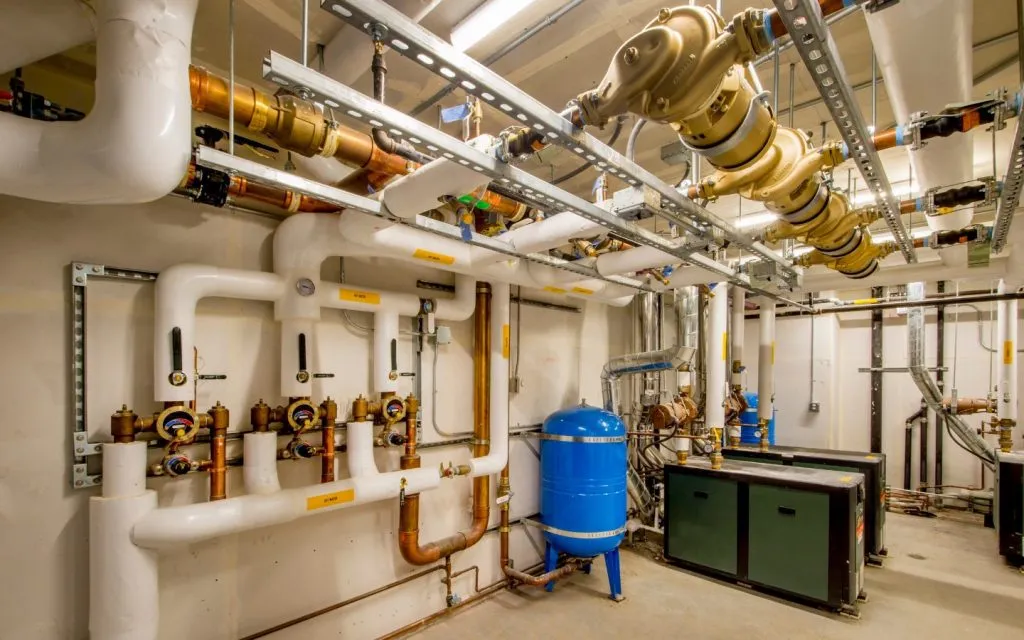
For businesses in the bustling city of London, having a reliable heating system is crucial. Whether you’re opening a new office, expanding your current premises, or simply upgrading an outdated system, commercial boiler installation services for businesses in London are essential to ensure your operations run smoothly and efficiently. Proper installation and maintenance of commercial boilers can make a significant difference in energy efficiency, cost savings, and the overall comfort of your workspace.
The Importance of Professional Installation
When it comes to installing a commercial boiler, professional expertise is paramount. Here’s why:
- Efficiency and Performance: Professional installation ensures that your boiler operates at peak efficiency, reducing energy consumption and lowering utility bills. A well-installed boiler can effectively meet the heating demands of your business without unnecessary energy waste.
- Safety: Commercial boilers are complex systems that require precise installation to operate safely. Professional installers adhere to stringent safety standards and regulations, minimizing the risk of accidents and ensuring the safety of your employees and premises.
- Compliance with Regulations: Commercial properties are subject to various building codes and regulations. Professional installers are well-versed in these requirements and ensure that your boiler system complies with all local laws and standards.
- Longevity and Reliability: Proper installation is critical to the longevity and reliability of your boiler. A professional installation can prevent common issues such as leaks, pressure problems, and system failures, ensuring that your boiler runs smoothly for years to come.
Key Considerations for Commercial Boiler Installation
When planning for a commercial boiler installation, several factors need to be considered:
- Type of Boiler: The type of boiler you choose will depend on your business’s specific needs. Options include gas boilers, oil boilers, and electric boilers, each with its own set of advantages. Consulting with a professional can help you determine the best choice for your business.
- Sizing and Capacity: The boiler’s size and capacity must match the heating demands of your commercial space. An undersized boiler will struggle to meet your needs, while an oversized one will lead to inefficiencies and higher costs.
- Location: The placement of your boiler affects its efficiency and accessibility for maintenance. Professional installers can help you choose the optimal location for your boiler.
- Integration with Existing Systems: If you’re upgrading or replacing an existing boiler, it’s essential to ensure compatibility with your current heating system. Professional installers can seamlessly integrate the new boiler with your existing setup.
Choosing the Right Installation Service

Selecting the right installation service provider is crucial to the success of your boiler installation project. Consider the following when making your choice:
- Experience and Expertise: Look for a provider with a proven track record in commercial boiler installations. Experienced installers can handle the complexities of commercial systems and provide high-quality workmanship.
- Reputation: Check reviews and testimonials from previous clients to gauge the provider’s reliability and customer satisfaction.
- Comprehensive Services: Choose a provider that offers a full range of services, including installation, maintenance, and repair. This ensures that all your boiler needs are met by a single, trusted source.
In London, ROWLEN is a reputable name known for delivering top-notch commercial boiler installation services. Their team of experts is dedicated to providing efficient, safe, and compliant installations tailored to the unique needs of businesses.
Conclusion
Investing in professional commercial boiler installation services for businesses in London is essential for ensuring efficiency, safety, and long-term reliability. By choosing an experienced and reputable service provider like ROWLEN, you can rest assured that your heating system will be installed correctly and maintained to the highest standards. Proper installation not only enhances the performance of your boiler but also contributes to the overall comfort and productivity of your business environment.
SEE ALSO:
-

 News4 years ago
News4 years agoLet’s Know About Ultra High Net Worth Individual
-
Entertainment2 years ago
Mabelle Prior: The Voice of Hope, Resilience, and Diversity Inspiring Generations
-

 Health4 years ago
Health4 years agoHow Much Ivermectin Should You Take?
-

 Tech2 years ago
Tech2 years agoTop Forex Brokers of 2023: Reviews and Analysis for Successful Trading
-

 Lifestyles3 years ago
Lifestyles3 years agoAries Soulmate Signs
-

 Movies2 years ago
Movies2 years agoWhat Should I Do If Disney Plus Keeps Logging Me Out of TV?
-

 Health3 years ago
Health3 years agoCan I Buy Ivermectin Without A Prescription in the USA?
-

 Learning3 years ago
Learning3 years agoVirtual Numbers: What Are They For?